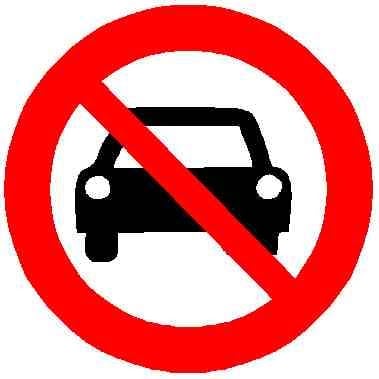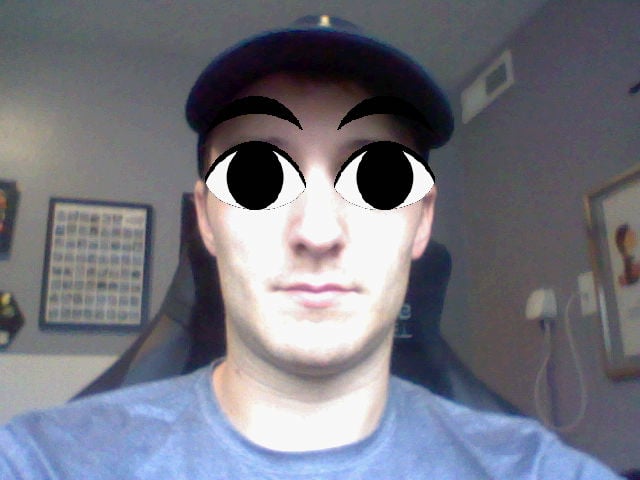Car companies realize that streets full of their products look terrible
Just like theme parks, the idyllic vision of the product is when you’re the only one around enjoying the product. The reality of LOTS of people enjoying the product while you do inherently reduces the appeal.
This is why indie rock lovers hated that it went mainstream. Suddenly everyone was enjoying the product they previously had to themselves.
I think the difference for music, movies, books, etc is that the product itself doesn’t change in substance or function when more people are using it. Parks, Cars and the infrastructure that enables them, Restaurants, and other experiential products are negatively impacted by widespread usage. Cars are less enjoyable because of traffic. Lines to get on space mountain make the whole experience worse than you imagine the ride itself being. All this stuff is marketed as a fantasy version of the actual experience you have in a way that isn’t the same as when other people are cringe with your music.
For some products you can probably draw some nice enjoyment curve. Cars for example, if you are the only one that has a car it sucks, no roads, no gas stations, etc. If everyone has one it also sucks, traffic jams, polution, noise, etc.
Some goes for most other things, beaches are great when it’s not crowded but there are enough people so they also have some places to get drinks and go to the bathroom. When it’s crowded and it’s basically towels touching it sucks.
I think for bikes the curve is much more spread out, even in the Netherlands where basically everyone ownes a bike, you can still enjoy it.
I do notice that when I was younger bicycle roads where a lot less crowded, so I feel for me personally the peak of the curve has been reached.
Most definitely. Like another commenter pointed out, music and movies don’t change but the way you experience them does. Theaters, Event halls become larger and more crowded on a kind of curve as well which makes them more expensive while also becoming less enjoyable.
I often wonder why there aren’t more copies of things rather than making the existing one bigger. The population of my city is bigger than the population of the bigger city an hour away did when they first had the airport i have to drive to, or the bigger stores and restaurants when they first opened. Why don’t we have more of those things even though in the last 30 years we’ve grown to what was at that time large enough to support that expansion?
¯_(ツ)_/¯
Is this a good comparison at all? I don’t believe so, as the other commenter explained nicely.
Did Indie Rock lovers hate that their music went mainstream?
Or did they hate that they didn’t play in small cozy venues anymore but large and anodyne halls that cost 10x per ticket? That their records started sounding worse for much the same reasons? That artists got bogged down with contracts that forced them to produce more, more, more whether they had ideas in their head or not?
The last one is the most important one to me: Independent is not just a genre, it actually means independently produced. And that sort of Independent never dies and rarely goes mainstream.
It’s pretty telling of the fact that:
Car-free streets and workable alternatives to driving, provide people the freedom that car ads are portraying.
There’s never traffic in a car ad.
Advertising cars with the exact scene that carbrained people are constantly getting in the way of is ridiculously ironic.
Carbrained people want to enjoy the beauty and lifestyle that comes from walkable cities, but those things only exist because people aren’t driving.
They want to drive on empty roads (that are empty because nobody else has cars) to get to a beautiful leaf-shaded downtown with cafés and shops (that only exist because of dense mixed-use cities) then park in an always-vacant spot right outside the door (that is only vacant because everyone else walked or biked)
The “dream lifestyle” of car ownership is a fakery that only exists if cars are an exclusive luxury for a tiny number of people. It’s fundamentally elistist, and selfish. But nonetheless that’s the lifestyle advertisers continue to push, and the public continues to lap up.
Yes. Like “You’re not stuck in traffic. You are traffic.”
But getting people to think through anything just seems impossible. It’s like most people never really advance beyond toddler levels of reasoning.
Car companies realize that streets full of their products look terrible
As an art and design nerd who really appreciates cars as pieces of industrial design, that is an extremely succinct and perceptive criticism.
(Also it a lot of them just aren’t that beautiful or interesting of pieces of design anymore which makes me a bit sad. Maybe it’s actually always been that way. Regardless, that’s really a different issue)
Also it a lot of them just aren’t that beautiful or interesting of pieces of design anymore which makes me a bit sad
A lot of the cars now are bigger. They don’t look sleek or interesting. They look overweight. Cumbersome.
I really dislike those big-ass trucks with the bed that never gets used taking up a lot of space in the city.
I feel like one could draw a connection between this and the obesity problems in the US.
Fun bit of introspection: I believe most SUVs and trucks are actually owned by women. The primary driver for big cars isn’t just male toxicity - it’s feelings of safety, extended to children. Many women have very genuine reasons to feel vulnerable anywhere they walk. That changes when they’re behind an 8000-ton tank.
This is not true. While SUV popularity among women is increasing for the reason you describe, they make only 52% of owners (proportional to percentage of women in society). Trucks are still overwhelmingly owned by men.
Thought I’d clear that up so nobody thinks they learned some “facts” that turn out to be fake.
I apologize if I stated that in a way disposed to overinterpretation; 52% is still “most”, but you’re right, it is a slim majority.
It was only meant to be interesting to those who would’ve thought women owners would be a minority - that masculinity was the main selling point.
@Katana314 @moriquende SUVs have undergone an interesting transformation in their marketing and in how conformist people perceive them. When they first exploded in popularity, they were seen as manly cars. Now in order to keep expanding the oversized car market, they’ve become the old minivans and a man, even if he lives in a city, is told SUVs are for women and he has to have a giant pickup truck to keep his “man card”.
@Katana314 @moriquende Another factor is that when women enter into patriarchal marriages, a lot of them allow their husbands to choose their vehicles for them. Certainly there are single women and married ones who buy SUVs for a variety of reasons, but there are also a lot of women who let men choose their cars for them, leading to a car choice that is not necessarily optimal for the safety, comfort, or preferences of the person driving it.
Yea, now they’re just running over other peoples children instead

Artistic designs has taken a backseat to profitability.
So we have a whole bunch of stylistically identical designs from all major companies. Without a logo on most vehicles today it is very difficult to distinguish between companies. They are all about the same with very little variability.
Case in point: the bog-standard station-wagon in that picture. Even the marketing dickheads realise they need a pretty girl in the picture to make it look remotely interesting.
… the fact that you just called an SUV a station wagon and, like, you’re not wrong, just made me super depressed. I drive a Mini and have since I started driving. In the beginning, I had the smallest car around. Now, I usually have the only car around.
It was tongue in cheek, but that’s pretty much what they are. At least here in Australia there’s still quite a few smaller cars around, but even new ‘small cars’ are getting pretty big.
Cars used to be awesome, now they suck. Go look at pictures of cars from the 40s to 60s or 79s even… there is no comparison.
This isn’t necessarily true. Even back then the streets were filled with shitbox cars that all looked the same. But only the cars that were beautiful and unique are still remembered and the rest are forgotten
I don’t know, I think the streets were probalby really rad in like the late 40’s early 50’s. I mean:

If you ignore all the nice neon and look at just the cars all you see are a bunch of similar looking cars. They all look like a Chevy Bel-Air to me. Now I am sure a 50s car enthusiasts would be able to name them all, but to your average person there aren’t any significant differences.
This is the same for cars today as well. Maybe 60 years in the future people will reminisce about the good old days of the Mazda Miata, Shelby Mustang, or Toyota Supra without realizing that these cars were few and far between and the streets were actually just filled with cheap Toyotas and Kias and Nissan Altimas.
They all look like a Chevy Bel-Air to me.
Nothing wrong with that!
I always love the “cars all look the same these days” comment as if vehicles of every decade weren’t closely following the same design trends. Cars today don’t look the exact same unless you’re blind, especially if these people are supposed to be enthusiasts, so the other option is these people are just fuckin’ stupid.
One thing I will give older cars, though, is that at least they were colourful. I have a WRB BRZ(that’s mostly parked because I have great public transit options) and I feel so out of place not because it’s a sportscar but because it’s not a greyscale mass of shit rolling down the grey road.
But the shit boxes people were driving in the 60s were VW Beetles, an objectively good looking car. Easily the most popular car of the 60s was the Mustang, an objectively beautiful car.
The real shit boxes didn’t start popping up until after the oil crisis in 73.
The real shit boxes didn’t start popping up until after the oil crisis in 73.
How dare you rip on the Pacer and the Gremlin!
Some of the conformity is safety. Cars today are generally designed with crumple zones, airbags, and other safety measures in mind. That leads to them looking similar to other cars designed with the same requirements.
There are still some beautiful cars today, but they are outliers. For example, I saw a Honda Prologue recently and loved it. It has a somewhat unique look that was much more obvious in person. And the Alfa Romeo Stelvio and Giulia, while bigger than their older brethren, always make me smile.
There are other examples. But largely, cars have become pretty samey and boring.
stuff like the VW buzz shows that you don’t even need to deviate much for it to stand out quite a lot, just a slightly different shape and 2 colours and bam i instantly like it so much more than the standard car
79s even
Uh, my first car ever was a '79 Chevy Malibu. There has never been a more boring basic car in existence, and for good measure it was mechanically a piece of shit. The only good thing about it was that it had once been owned by semi-famous comic book artist P. Craig Russell.
Would be a shame if a dozen eggs would accidentally land on that polished chrome surface
Gotem.

Huge towers of blue icecream. Or maybe something phallic. With stylised spaceships on top. Or maybe weirdly shaped chocolate chips.
obviously two ice cream cones spilling their contents, hence why they’re empty.









